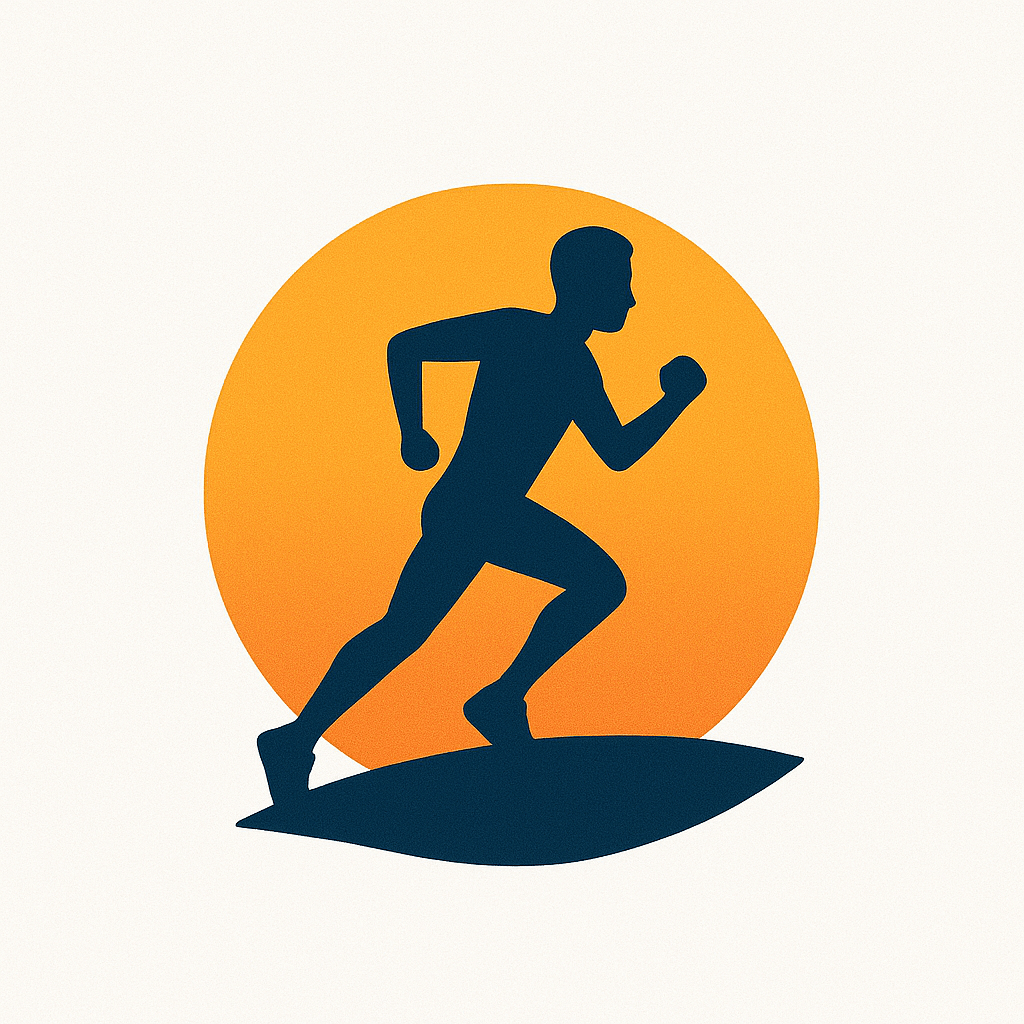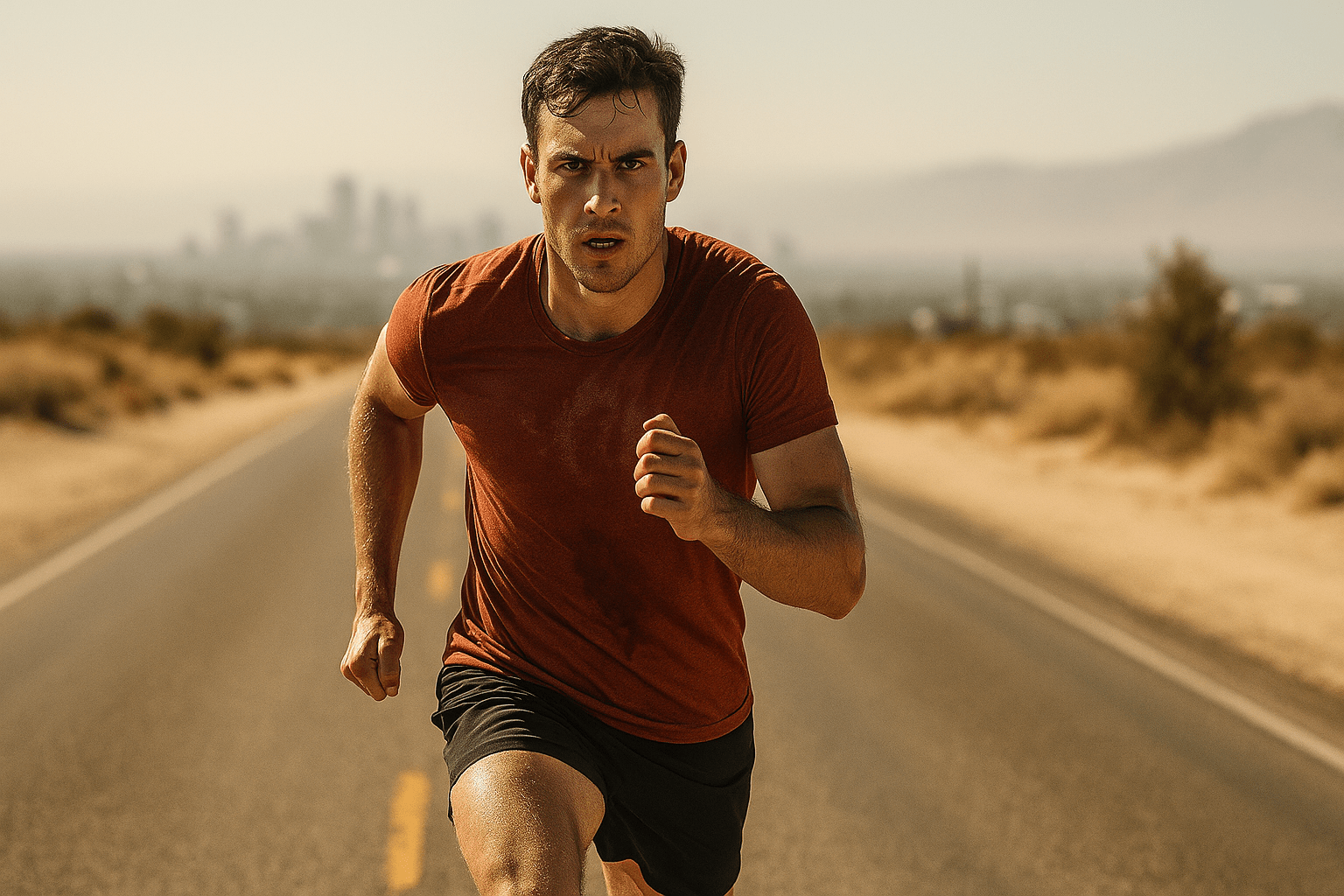When the Heat Hits Hard
You lace up and step outside—only to feel the sun pressing down on your shoulders like a weighted vest. Within minutes, your pace drops. Breathing gets heavy. Legs feel leaden. You glance at your watch and wonder: Why does this feel 10 times harder?
You’re not imagining it. Heat dramatically changes how your body runs. But here’s the good news: with the right understanding and a smart approach, hot runs can still be strong runs.
Let’s dive into the science of why heat affects running—and how you can adapt, endure, and even thrive.
What Happens to Your Body When You Run in the Heat
Your Internal Cooling System Goes Into Overdrive
When you run, your muscles generate heat. On cooler days, your body efficiently dissipates that heat. But in hot, humid conditions? Your internal thermostat goes into panic mode.
Your body redirects blood from your muscles to your skin to aid cooling. You sweat more to release heat via evaporation. But this comes at a cost: your muscles get less oxygen-rich blood, which means less power and endurance.
In short, your body is busy surviving—not optimizing.
Dehydration and Electrolyte Loss
The hotter it is, the more you sweat. That means faster fluid loss and with it, vital electrolytes like sodium and potassium.
Lose too much too fast, and you’ll start to cramp, feel nauseated, or dizzy. Performance drops sharply, and the risk of heat-related illness skyrockets.
Even a 2% loss in body weight from dehydration can impair physical and cognitive performance. That’s about 3 pounds for a 150-pound runner—easily lost in a single summer run.
Increased Heart Rate and Perceived Exertion
Ever notice your heart pounding at a pace that normally feels easy? That’s because your cardiovascular system is under double duty: cooling your body and fueling your run.
The result? A higher heart rate at lower intensity. Running in the heat feels harder because it is.
Your perceived exertion goes up, even if the pace doesn’t. Recognizing this helps you adjust without guilt.
How Heat Affects Performance Metrics
Slower Paces Are Physiologically Appropriate
It’s not just “in your head.” In high heat, your VO₂ max (your maximum oxygen use) can drop by up to 10-15%.
Your body burns more carbohydrates and less fat, depleting energy reserves faster. Lactate builds up quicker. Muscles fatigue sooner.
In other words: your usual pace isn’t fair game. Adjusting your expectations is not weakness—it’s wisdom.
Heat Training Adaptations Over Time
Here’s the upside: the more you train in heat, the more your body adapts.
- Increased plasma volume boosts cardiovascular efficiency.
- Improved sweat response helps you cool faster.
- Lower heart rate at given intensity as your body acclimates.
Adaptation takes 7 to 14 days of consistent exposure. Start slow, stay consistent, and the gains will come.
Smart Strategies to Run Strong in the Heat
Timing, Route, and Intensity Adjustments
- Run early or late when the sun is weakest.
- Choose shaded paths or loop routes with hydration stations.
- Scale back intensity: try effort-based running (RPE or heart rate) instead of pace-based goals.
When you train smart, you stay strong.
Gear and Cooling Tools
Your gear matters more than ever in the heat:
- Light-colored, breathable clothing helps reflect sunlight.
- Moisture-wicking fabrics reduce chafing and discomfort.
- Brimmed hats and sunglasses protect your face and eyes.
- Cooling towels or ice bandanas can bring core temps down quickly.
Stay proactive about hydration: drink throughout the day, not just before your run.
Listen to Your Body—Literally
Know the signs of heat stress:
- Dizziness
- Confusion
- Rapid pulse
- Nausea
- Goosebumps on hot skin
If you feel off, stop. No run is worth risking heat exhaustion or heat stroke.
Why Running in Heat Still Builds Strength
Heat Builds Mental Toughness
Hot runs challenge your resilience like few other workouts. When you learn to stay calm and present in discomfort, you gain mental tools that transfer to race day, winter training, and life.
Running through heat trains you to lean into adversity—to endure, adapt, and keep going.
Post-Heat Conditioning Benefits
Here’s the real kicker: when the temps finally drop, you feel faster. It’s called the “heat boost effect.”
After training in high temps, your cardiovascular system runs more efficiently in cooler weather. You carry less heat stress, feel lighter, and often perform better.
Elite athletes have used heat training as altitude alternatives. That’s how powerful it can be.
Don’t Fear the Heat—Train With It
You can’t control the weather, but you can control your mindset and preparation.
Understand the science. Respect the conditions. Adjust the plan. And when you do? Running in the heat becomes a strength-builder, not a setback.
So next time the forecast looks scorching, don’t skip. Strategize.
Because every drop of sweat you earn now becomes speed, strength, and grit later.






Leave a Reply